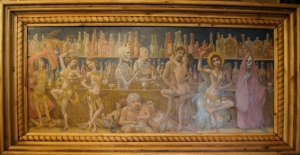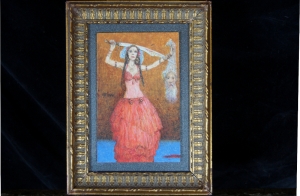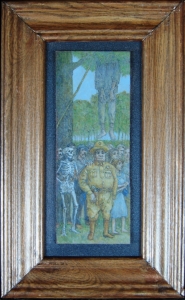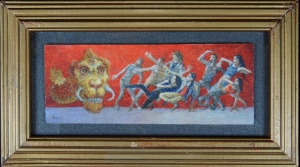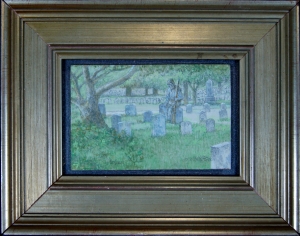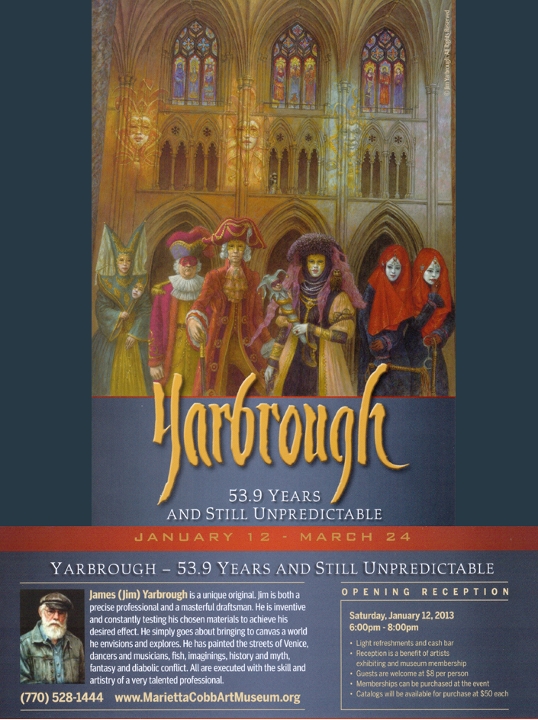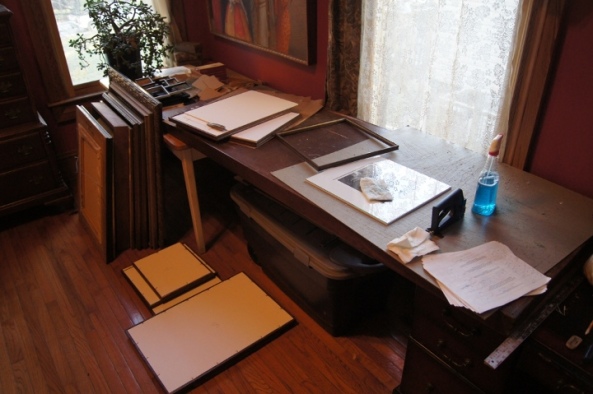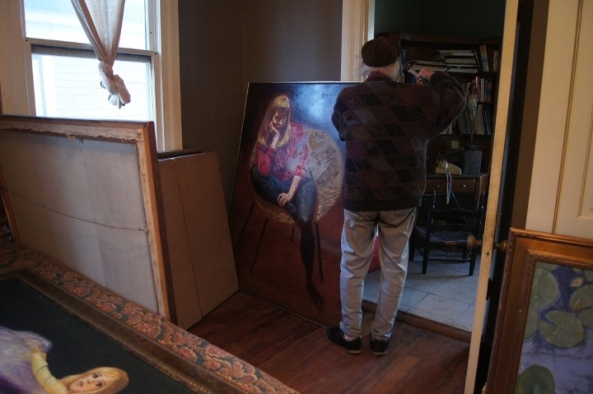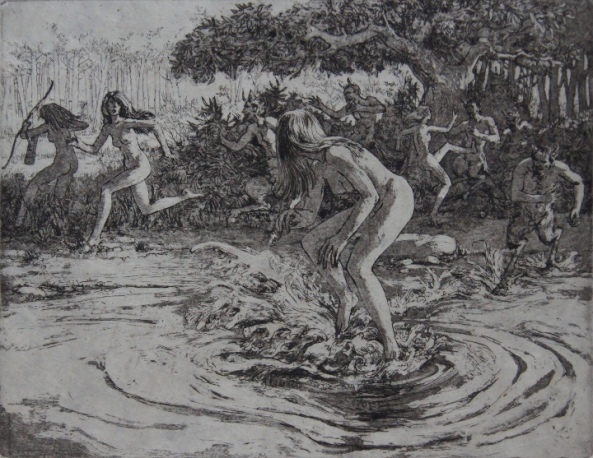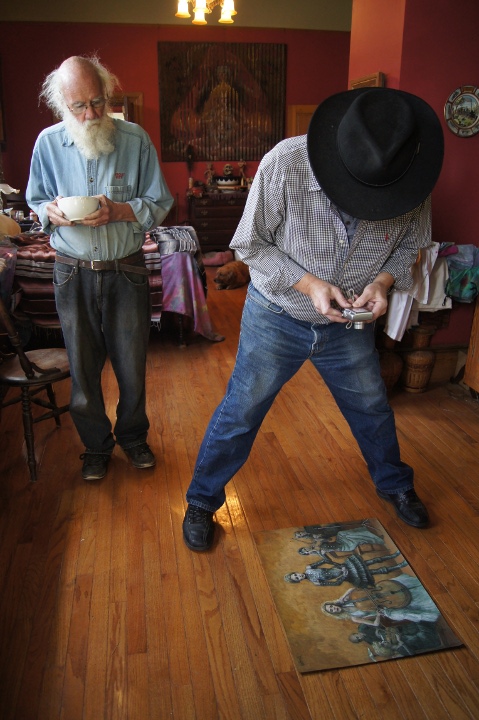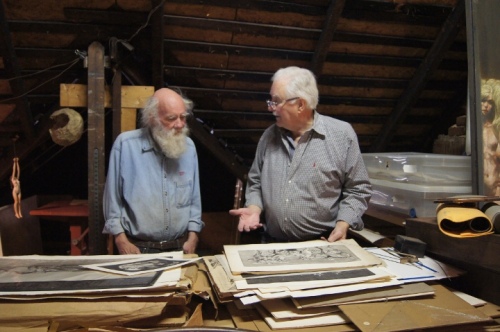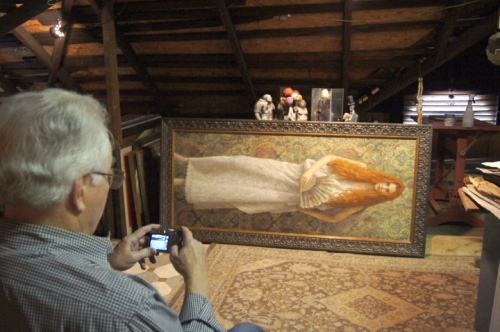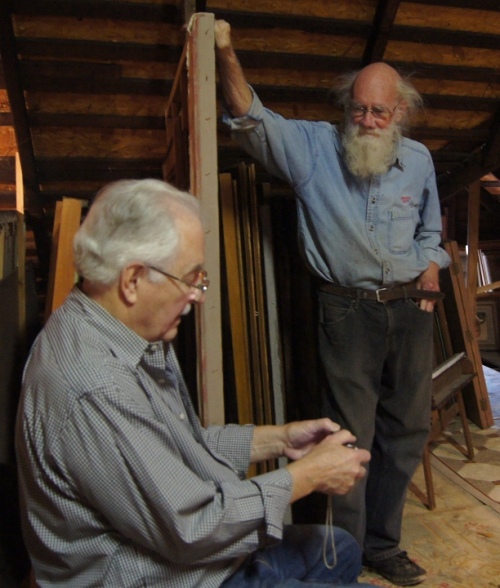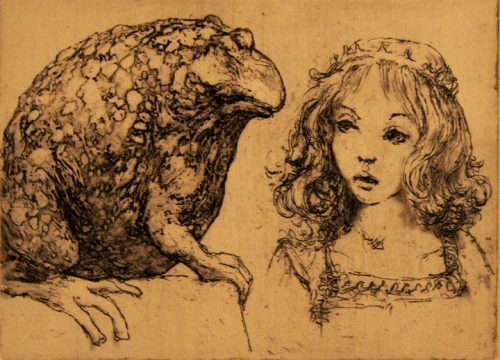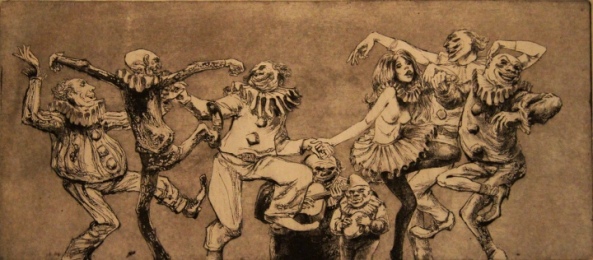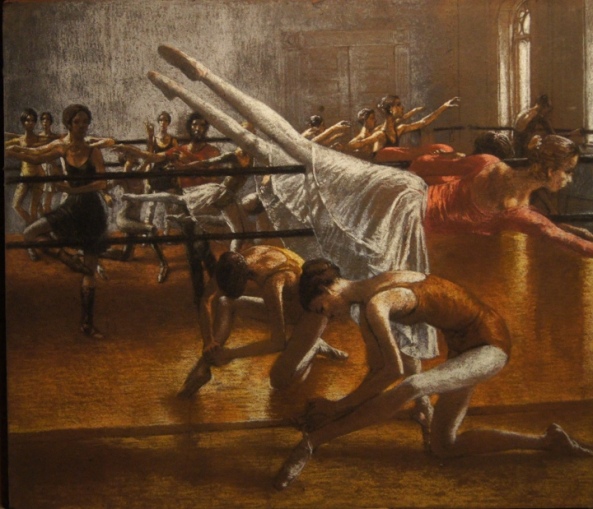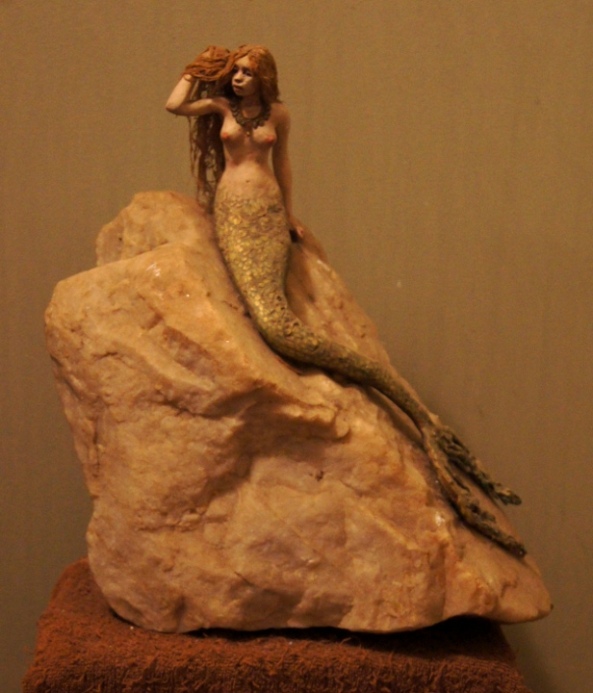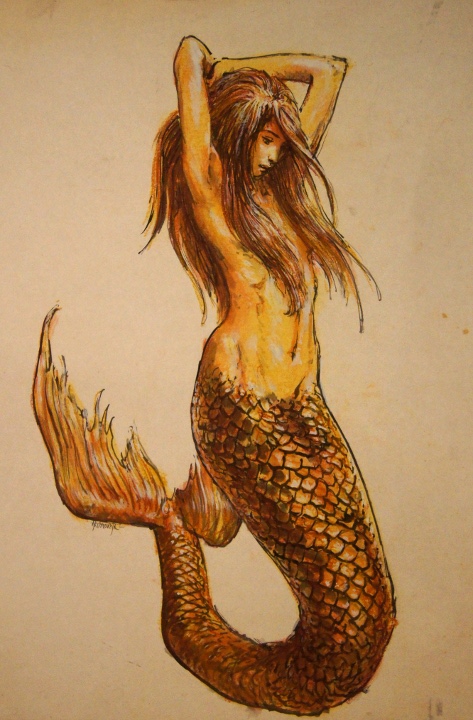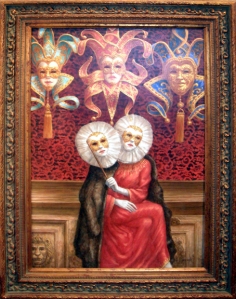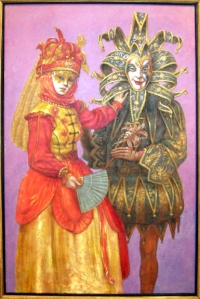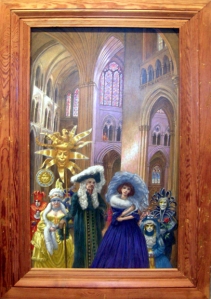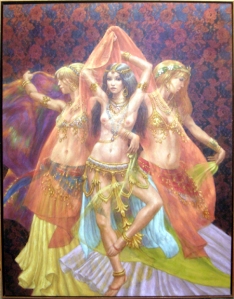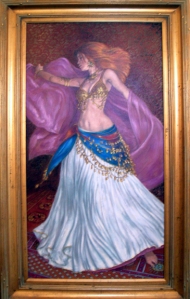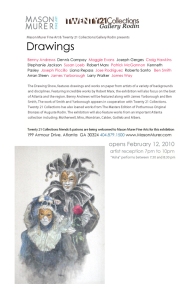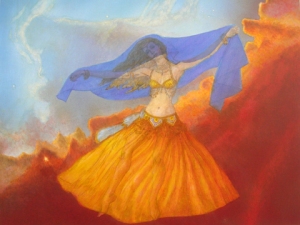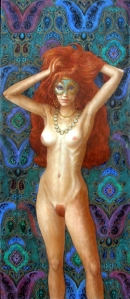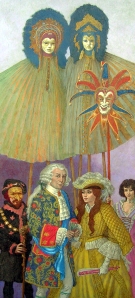Last month we put up a bunch of miniature paintings over on Etsy, and lo and behold we sold two of them. Who’d a thunk it? Jim is continuing to make miniatures of this plague year, but the most recent painting he is working on is a much larger one, perhaps 30″x18″, and is much too complex to make into a miniature. He is planning to take certain parts of it and make miniatures from it, but this particular painting has everything – Indian goddess barflies, drunk or dead patrons, heads in bottles, and a bartender of Death. Here’s a picture.
And here are the latest of his miniature Death paintings. For this batch, he went a little further afield than the first time. He’s still doing dancers, but they’re not all bellydancers. He’s got ballet dancers, and a bunch of modern dancers, as well as a couple of paintings featuring our local cemetery, and a very disturbing lynching. Personally, I hate that last one, but he saw the need to make a commentary on that particularly heinous form of death, given the times we’re in, and the recent upsurge of violence against people of color.
The painting titles have links to their page on Etsy for a larger photo and more details. Because they’re miniatures, they’re quite small – the picture surface measures no larger than 25 square inches. There is a lot of detail in them because Jim is working in egg tempera, with absolutely tiny little brushes, and using magnifying glasses in order to see and work on the surface. The paintings are very delicate in their attention to detail, and they all bear a closer look. Enjoy them, and please let Jim know what you think in a comment.
This painting is unusual for the series in that all six figures are skeletons. Usually Jim paints at least one human, presumably being infected, or marshaled toward death, by the skeleton(s) in the scene. He actually derived this particular composition from a larger painting (not in this series) with many more dancers, including a self portrait. But that composition was far too complex to attempt at miniature scale, so here we are.
Death in Costume with Funerary Urn and Birdcage
This scene was inspired at our local cemetery, and features a magnificent Victorian urn. BITD the Victorians had a thing for death, and visited their cemeteries for picnics and celebrations. People got dressed up, and paraded around admiring all the richly decorated tombstones and monuments. So of course Jim thought of Death promenading past this enormous urn we found, and wanted to make a painting of it. This painting is unusual, again, for lack of live human figures. But perhaps for Death, the thought of a big urn stuffed with souls is enough.
Belly Dancer of Death with Sword and Head (Self-Portrait)
Okay maybe he didn’t intend it as a self portrait, but it totally resembles him. Jim often puts quite a lot of himself into his figures, such that all his men look like him, and his women don’t look like anybody in particular (and certainly not the model). His unconscious self portraits appear in many of his paintings, and he doesn’t seem to recognize them as such until they’re pointed out. At that point he just shrugs. I think it’s funny.
Belly dancers often use props such as fire and swords in their dancing. Jim has painted this theme several times. This painting combines ritual sword dancing with one of my favorite subjects – judith and holofernes.
In this painting, the dancers toss silk shrouds as if preparing to throw nets. But there is Death, dancing with them, turning every movement into a threat. Another eastern dance theme, something Jim has gone back to time and again during his entire 60+ year career. When we finally visited India, we didn’t go to see any dance performances, and saw only ancient carved dancers on ancient stone temples, but he’d studied the tradition so closely he almost knew their names.
This is not my favorite painting. An old fashioned lawman has just finished stringing up some poor guy, attended and egged on by the angry, violent mob. Death stands at his elbow, not just encouraging him, but preparing to drag him off next. Evil people die too, and neither their righteous pretense, nor the trappings of authority, does them any good.
This is more my taste in paintings. A group of dancers totally freak out when their ornamental dragon head comes to life and threatens to eat them. In this painting there are no skeletons, as Jim felt that an avenging dragon is symbol enough of death and destruction. The dancers start out thinking they control the dragon as merely a prop and a symbol, but they soon realize the power of the dragon unleashed, and try to flee, but we can guess how well that’s going to turn out…
Jim once again cheerfully mixes genres to make his point. A woman in bellydance costume stands in an arabesque as men play stringed instruments behind her; death plays a mean cello, and some guy perhaps far enough away not to catch the rona is playing a violin. I get the impression that this moment went on like this forever – she standing there waiting to catch her death, while the flute player edges off the stage to get away from the cello player.
Death in the Confederate Cemetery 2
Death as a confederate soldier, having a good set in the shade with old comrades. This scene is taken from our cemetery, which has quite a few civil war graves. Jim imagines, as we walk past the gravestones, the ghosts of all those soldiers stirring, watching our tumultuous present with bemusement.
Death in the Confederate Cemetery 1
While not framed in the same moulding as the first in this duo, the subjects are so similar that I’m at a loss what to call them. IDK, maybe Death is waiting for someone to come along walking their dog off the leash or something. Who can say what goes on in the mind of an artist when they’re painting – not the artist themself, that’s for certain.
There you go, Jim’s latest miniatures. He’s going to do more, but right now he’s distracted by the idea of making a youtube video to show people how to make things the renaissance way – like egg tempera, and gesso, and clayboard, and encaustic medium. I’ve taken a test video of him making egg tempera, and so far i’ve researched the various editing software for my computer, and just have to find one that works and that i can figure out how to work (two different issues)
In the next blog post, i’ll be showing a bunch of larger paintings that we’ve got up on Etsy. The water paintings. They’re just all the paintings i’ve cataloged that have water as their theme (there are loads more that haven’t yet been cataloged). Jim has painted a whole bunch of water in his years – koi paintings, ponds and pools, beaches, submerged and distorted figures, and I wanted to start getting them online so people could appreciate them.


